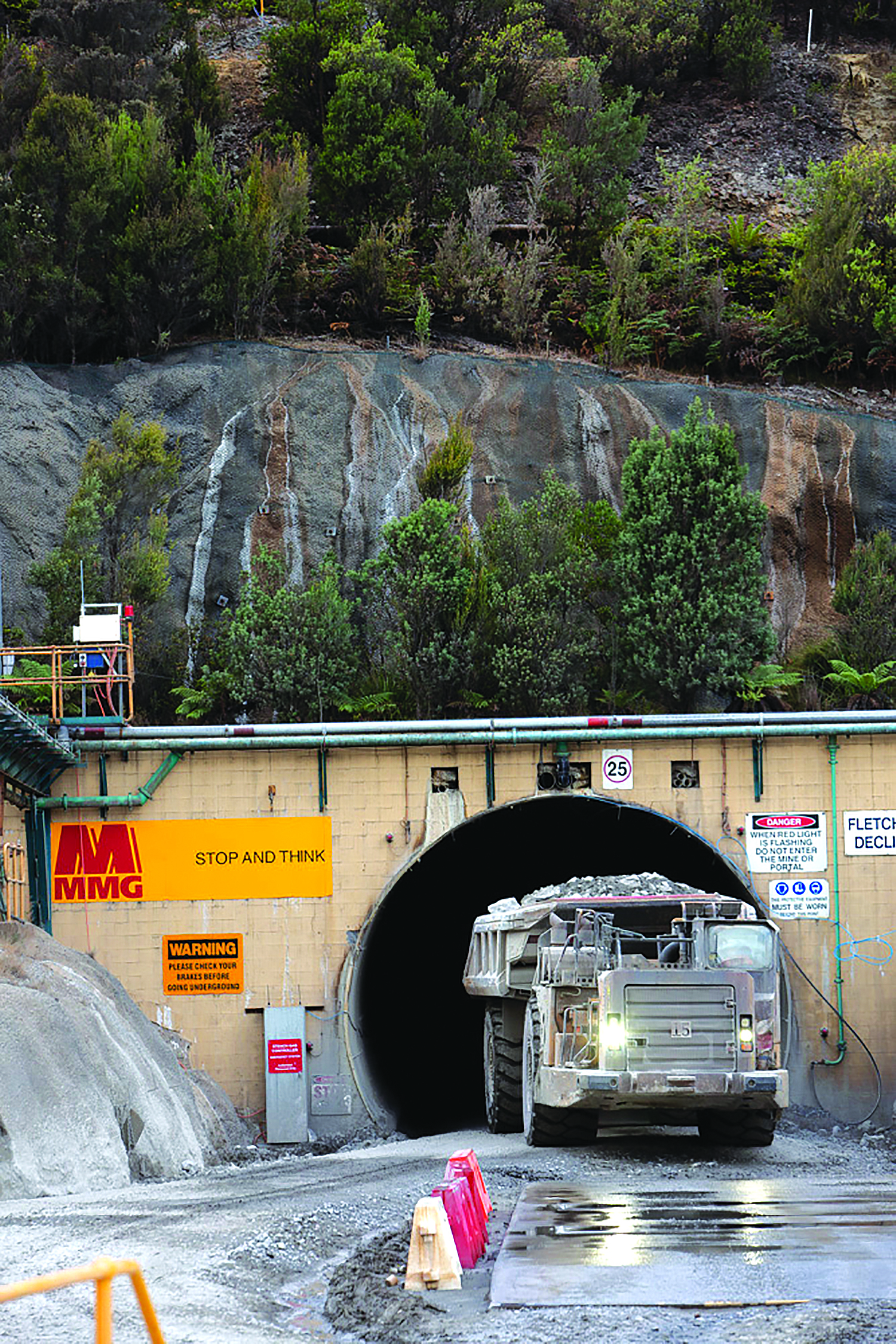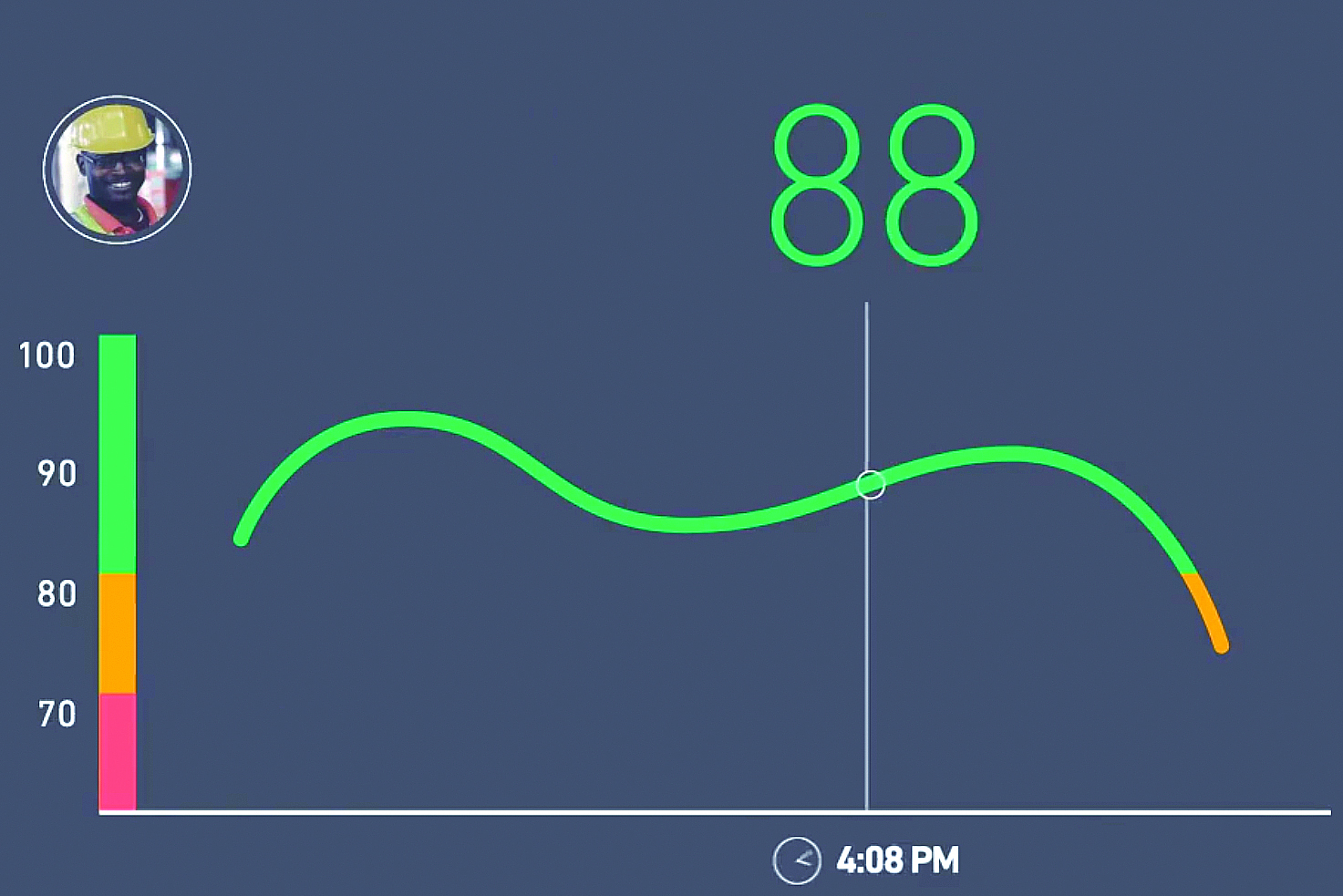
Hexagon has deployed its HxGN MineProtect Operator Alertness System (OAS) on a fleet of underground mining trucks at MMG’s Rosebery mine in Tasmania, Australia. (Photo: MMG)
Worker fatigue has been an ongoing concern in many industries since before the Industrial Revolution, and the mining sector has not been immune. In fact, the nature of the industry makes fatigue a critical issue, given the often harsh environment and jobsite hazards that its workers are exposed to.
A 2018 study* by researchers from the U.S. National Institute for Occupational Safety and Health pointed out that the industry shares the garden variety of fatigue-causing factors that plague industrial work in general – long working hours and shift-work schedules, for example – but also presents a combination of additional aggravating factors such as dim lighting; limited visual acuity; hot temperatures; loud noise; highly repetitive, sustained, and monotonous tasks; long commute times due to mine site remoteness; early morning awakenings; and generally poor sleep habits.
The NIOSH researchers explained that, even with the amount of fatigue-related study accumulated over the years, as a concept worker fatigue is difficult to nail down. This is mostly because fatigue is what researchers call a ‘latent factor construct,’ meaning that fatigue is more of an idea that cannot be directly measured but instead must be inferred through several observable characteristics.
Fatigue manifests itself through several different types of characteristics:
• Psychological (weariness, lack of motivation, stress-induced actions).
• Physiological (loss of strength and stamina, energy consumption).
• Cognitive (slowed reaction time, forgetfulness).
• Behavioral (eyelid closure or head nodding, slower speech, decreased productivity).
Starting roughly 10 years ago, the mining industry began focusing on fatigue as a major obstacle in the path of improved safety and productivity, and the elusive nature of a workable management strategy for fatigue detection and management attracted the attention of industry vendors both from inside the industry, such as Caterpillar and Hexagon, as well as generalized workforce performance and safety solutions providers like Circadian and Optalert.
Recent reports indicate that vendors are gaining market presence as they introduce increasingly refined operator fatigue measurement and worker alertness systems into the mining workplace. For example, Hexagon just announced that it partnered with base metals producer MMG to deploy its HxGN MineProtect Operator Alertness System (OAS) on underground mining trucks at the Rosebery mine in Tasmania, marking Australia’s first application of OAS to underground mining trucks.
According to Hexagon, MMG wanted a solution that would help detect fatigue in their operators while being reliable in a complex underground environment. Rosebery mine worked with Hexagon to install the technology in 11 underground trucks with 81 operators now registered to use the system. Hexagon said the technology was easy for MMG to integrate into its systems to provide its operators with an additional safety check during their 12-hour shifts.
“The feedback from our people using the system has been overwhelmingly positive,” said Steve Scott, general manager for the Roseberry mine. “They’ve seen real value in the technology because it not only helps them to recognize that they’re tired, but also manage their fatigue better after their shifts.”
Also recently, Vancouver, B.C., Canada-based Fatigue Science, a provider of predictive fatigue technology for mining, transportation and heavy industry, reported that one of the industry’s largest explosives, blasting systems, mining chemicals and geotechnical monitoring technology suppliers has implemented Fatigue Sciences’ Readi platform throughout several mine sites and distribution sites across Mexico and the Dominican Republic.

Fatigue Science says its ReadiScore provides an hourly prediction of each operator’s risk for safety events and productivity loss associated with fatigue, thus providing a solution for traditional fatigue management problems such as lack of objective fatigue data and concerns about the consequences of workers self-reporting fatigue problems.
The Australian-based client, said Fatigue Science, has made a 3-year commitment to the use of Readi, and has decided to provide ReadiWatch smartwatches to more than 250 of its operators so they can receive Fatigue Alerts on-wrist in advance, before periods of critical fatigue.
Based on a biomathematical fatigue model called SAFTE, Readi interprets operator sleep data and/or estimates of operators’ sleep derived from machine learning. With these data, Readi calculates a personalized fatigue prediction for every operator, for each hour in every shift. It provides these fatigue predictions both to supervisors and to the operators themselves via mobile notifications and optional wearables.
At the beginning of each shift, supervisors receive push notifications alerting them to any workers who are flagged as having a high risk of fatigue for that day, including fatigue that may develop later in that shift. Supervisors use the data to plan fatigue breaks and rotate safety-critical tasks.
In a recent blog post, Fatigue Science pointed out how its system can help overcome inherent issues in traditional pre-shift briefings, during which workers were routinely asked “Anybody feeling too tired to operate safely?” The answer could be honestly “no,” as fatigue can build later in the shift even if the operator feels fine at the start.
The company notes that the science of circadian rhythms has determined that most shifts start at a time that is close to one’s “circadian peak”. This means that while an operator may truly be facing critical fatigue at some point during their shift, they are unlikely to face it around a 7:00 p.m. or 7:00 a.m. start time. A 7:00 p.m. starting time for a night shift, is, for most individuals, very close to their most alert time of day. Therefore, an inquiry into whether one is fatigued at that very moment may result in truthful responses that fatigue is not – at that exact moment – a major concern.
Fatigue Science claims that, with the availability of validated predictive fatigue data such as that collected by its Readi platform, mines now have the means to maximize fatigue management by overcoming traditional challenges such as lack of objective fatigue data and concerns about the consequences of workers self-reporting fatigue problems. This can be accomplished through the ReadiScore, an objective, validated predictor of each operator’s personal risk of safety events and productivity loss associated with fatigue. As an hour-by-hour prediction, each operator’s ReadiScore is unique every hour and every day, creating the opportunity for a meaningful distinction in the fatigue risk level of each member of a crew.
The company explains that now, at the pre-shift briefings of more than 20 mine sites using the platform, shift supervisors receive a simple push notification on their phones alerting them as to whether any operators on their crew face abnormally high levels of fatigue risk on the shift ahead. These notifications are based not only on each operator’s current fatigue level, but also on their predicted fatigue level for every hour in their shift ahead.
In practice, this means that an operator might truthfully answer “I feel fine” at the start of a shift, but at the same time be projected to face critical fatigue six hours later. The supervisor, with a single tap, can see detail on each operator, and, after consulting the operator, decide to plan countermeasures before the fatigue actually sets in.
In one recent study referenced by the company, proactive countermeasures resulted in a 50% reduction in reactive camera alarms from a Caterpillar DSS in-cab fatigue detection system.









